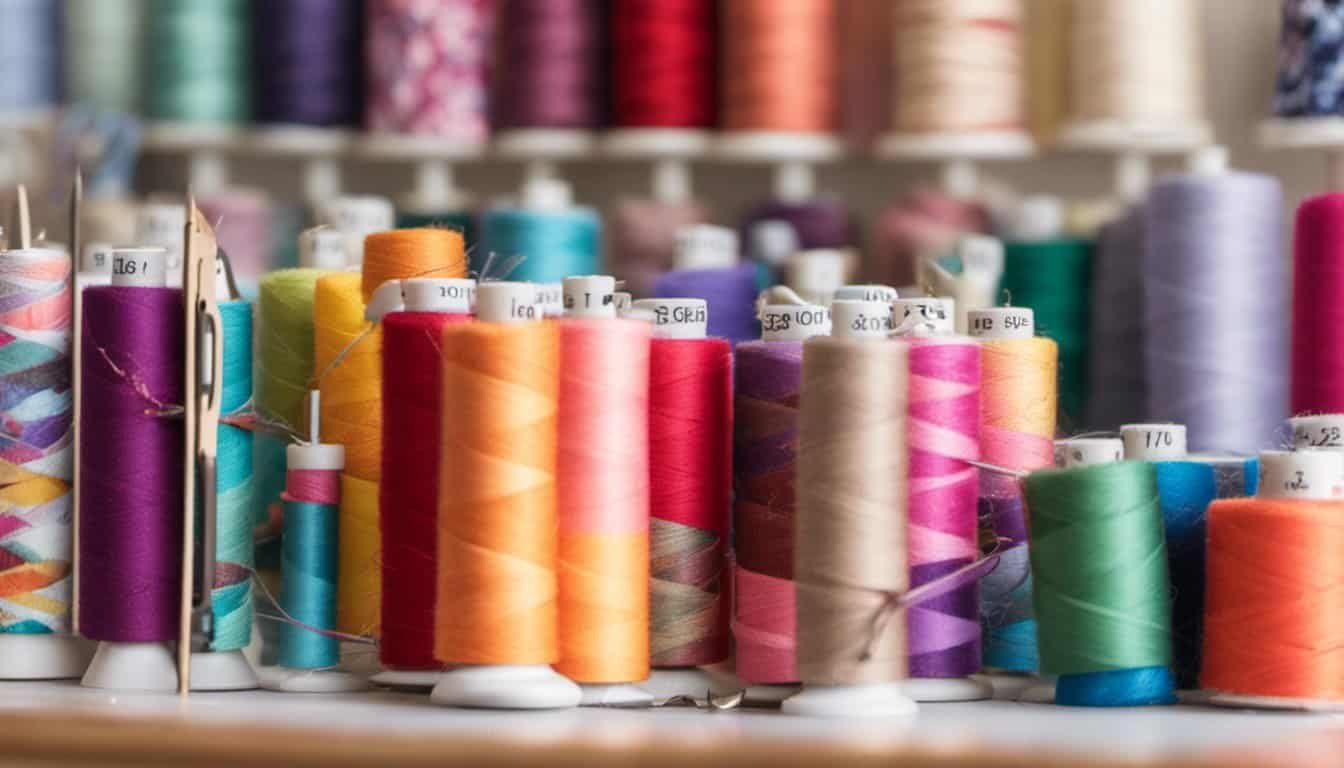Are you expecting a little bundle of joy and wondering if it’s safe to continue using your sewing machine during pregnancy? Well, you’ve come to the right place! In this article, we’ll explore the safety of using a sewing machine while pregnant. We’ll address any concerns you may have and provide you with some helpful tips to ensure a safe and comfortable sewing experience throughout your pregnancy.
Pregnancy is a special time filled with excitement and joy, but it can also come with its fair share of worries. If you’re an avid sewer, you may be wondering if operating a sewing machine could potentially harm your baby. Rest assured, there’s no need to put your sewing projects on hold just yet! We’ll delve into the potential risks associated with using a sewing machine during pregnancy and provide you with some practical advice to ensure both you and your baby stay safe.
Safety should always be a top priority, especially when you’re expecting. While it’s natural to have concerns about the potential risks of using a sewing machine during pregnancy, it’s important to understand that with proper precautions, sewing can be a safe and enjoyable activity. In this article, we’ll dispel any myths and provide you with the information you need to make an informed decision about sewing during your pregnancy. So, let’s dive in and explore the safety measures you can take to ensure a worry-free sewing experience while expecting.
Understanding the Potential Risks
When it comes to crafting and sewing during pregnancy, it’s important to be aware of any potential risks involved. While sewing machines are generally safe to use, it’s still a good idea to understand the precautions you should take to ensure your safety and the safety of your baby.
One potential risk is the exposure to chemicals and fumes from certain fabrics, especially if you’re using adhesive sprays or solvents. To minimize this risk, make sure to work in a well-ventilated area. Open windows or use a fan to keep the air circulating. Additionally, opt for natural fabrics whenever possible, as they tend to have fewer chemicals and are generally safer for you and your baby.
Another concern is the physical strain that sewing can put on your body, especially as your belly grows. Take frequent breaks and listen to your body. If you start to feel uncomfortable or tired, take a step back and rest. Remember to maintain good posture while sewing to prevent any unnecessary strain on your back.
Additionally, be mindful of the position of your sewing machine’s foot pedal. As your belly grows, you may find it more difficult to reach comfortably. Consider using a foot-operated sewing machine or an adjustable table that will allow you to position the pedal at a more comfortable height.
Finally, it’s important to pay attention to the materials you use. Some fabrics, such as those treated with flame retardants or formaldehyde, can potentially be harmful. Before starting a new project, read the fabric labels carefully and choose those that are labeled as safe for use during pregnancy.
By understanding and taking these precautions, you can continue to enjoy your sewing and crafting hobbies during pregnancy while minimizing any potential risks. Remember, every pregnancy is different, so it’s always a good idea to consult with your healthcare provider if you have any concerns or questions about specific activities.
Let’s move on to the next section and explore some safety tips for using a sewing machine during pregnancy.
Evaluating the Safety Features of Sewing Machines
When it comes to sewing during pregnancy, safety should always be a top priority. As an expert in all things sewing, embroidery, knitting, and crafts in general, I understand your concerns about whether using a sewing machine is safe for you and your baby. In this section, we’ll delve into the topic of evaluating the safety features of sewing machines, so you can make an informed decision.
1. Noise and Vibration Control: Some sewing machines can produce vibrations and noise that may cause discomfort during pregnancy. Look for machines that feature noise reduction mechanisms and adjustable speed settings to minimize any potential disturbance.
2. Needle Guard and Finger Guards: Sharp needles can pose a risk, especially when you’re feeling a bit clumsy due to your baby bump. Opt for machines that have built-in needle guards or finger guards to prevent accidental pricks and protect your fingers from getting too close to the needle.
3. Safety Locking Mechanism: A sewing machine with a safety locking feature ensures that the needle doesn’t move when you’re threading the machine or changing the bobbin. This prevents accidental needle strikes or injuries to your fingers.

4. Automatic Thread Cutters: While it may seem like a small feature, having an automatic thread cutter can be incredibly helpful during pregnancy. It eliminates the need for extra hand movements and reduces the risk of accidentally cutting yourself with scissors.
5. Ergonomic Design: Look for sewing machines with an ergonomic design that supports your posture and reduces strain on your back, shoulders, and wrists. Features like adjustable height settings and padded handles can make a significant difference in your comfort level.
Remember, even with these safety features, it’s important to practice safe sewing habits. Take regular breaks, maintain good posture, and always follow the manufacturer’s instructions for safe operation. If you have any concerns or specific questions about using a sewing machine during your pregnancy, consult with your healthcare provider for personalized advice.
Tips for Using a Sewing Machine Safely During Pregnancy
When it comes to sewing and pregnancy, it’s completely understandable that you want to ensure the safety of both yourself and your baby. The good news is that with a few simple precautions, you can continue to enjoy your favorite craft while keeping your little one safe. Here are some tips for using a sewing machine safely during pregnancy:
- Choose a well-ventilated space: Make sure that your sewing area is well-ventilated to minimize your exposure to any chemicals or fumes from fabrics. Open a window or use a fan to keep the air circulating.
- Take breaks and stay hydrated: Sewing can be a captivating activity, but it’s important to take regular breaks and stay hydrated. Prolonged periods of sitting and sewing can lead to fatigue and discomfort. Listen to your body and take breaks to stretch, walk around, and drink plenty of water.
- Practice good posture: Maintaining good posture while sewing is crucial, especially during pregnancy. Sit up straight with both feet planted firmly on the ground, and use a chair with good back support. Consider using a cushion or pillow to support your lower back if needed.
- Use safe materials: Pay close attention to the materials you work with during pregnancy. Opt for natural fabrics, such as cotton or linen, which are less likely to contain harmful chemicals. Wash your fabrics before using them to remove any potential irritants.
- Mind your noise levels: Excessive noise can be stressful for both you and your baby. Look for sewing machines that have noise reduction features or try using earplugs to minimize the impact of loud sewing machine noise.
- Be mindful of vibrations: Vibrations from the sewing machine can be uncomfortable during pregnancy. Look for machines that have built-in vibration control or consider placing a non-slip mat under your sewing machine to reduce vibration.
- Practice safe habits: Remember to follow general safety guidelines while using your sewing machine. Keep your fingers away from the needle when it’s in motion, use a safety guard if available, and always turn off the machine when you’re finished.
Conclusion
By following these tips, you can safely continue using a sewing machine throughout your pregnancy. Creating a well-ventilated sewing space and taking regular breaks will help you stay comfortable and avoid overheating. Maintaining good posture while sewing will minimize strain on your back and neck. Using safe materials and being mindful of noise levels and vibrations will help protect both you and your baby. It’s also important to practice safe sewing habits, such as avoiding reaching over the machine while it’s still running.
« Unveiling the Ultimate Stardew Valley Sewing Machine Secrets: Transform Fabrics, Make Millions, and Unleash Your Creative Genius
The Astonishing Artistry of Sewing: Unveiling the Secret Techniques That Will Transform Your Creations »
Remember, every pregnancy is unique, so it’s always a good idea to consult with your healthcare provider for personalized advice. They can provide guidance based on your specific circumstances and any potential risks associated with using a sewing machine during pregnancy. By taking these precautions and listening to your body, you can enjoy your hobby while keeping yourself and your baby safe and healthy. Happy sewing!














